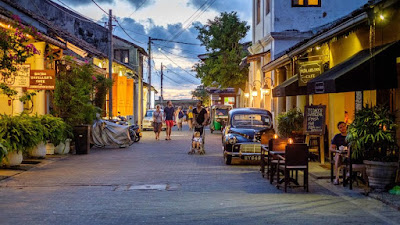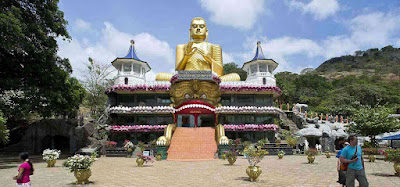A UNESCO World Heritage Site is
an important structural landmark in the world chosen by the United Nations
Educational, Scientific and Cultural Organization as a protected area. Sri
Lanka alone has 8 beautiful UNESCO World Heritage Sites. The selected places
are usually in a historical location with cultural and anthropological
significance.
The small islandic country has
eight such cities- six cultural and two natural. Keep reading to find more
about them, so that you can plan accordingly if you have applied for Sri Lanka ETA visa. Here is a list
of UNESCO World Heritage Sites:
Kandy
The mountain city of Sri Lanka –Kandy
that was once home to the Sinhalese Kings from 1592 to 1815, is now famous for
the sacred Temple of Tooth. The temple is considered sacred of great importance
as it contains the relic of Buddha inside a golden casket. The Sacred city of
Kandy was appointed the World Heritage Site in 1988, due to the Temple of the
Tooth. Apply for Sri Lanka ETA visa
and visit the temple in August to be a part of Vesak celebrations.
Sigiriya
Famous for its 200 meters high
rocky outcrop, Sigiriya holds the ancient remnants of King Kasyapa`s palace,
dating back to 5th century AD. One can reach the top by using the
staircase which is built on the side of the mountain. The fort features the
giant lion at the façade and thus is also known as the Lion Rock Fortress.
Climb to the top and enjoy the 360 degree view of the jungle below. The ancient
water reservoirs are still in working conditions. It was named a UNESCO World
Heritage Site in 1982. Get your SriLanka ETA visa approved in few hours and witness this beautiful
fortress.
Anuradhapura
The city of Anuradhapura was the
first ancient capital of Sri Lanka, and is still considered a sacred Buddhist
religious center. Located around 200 km north of Colombo, the current capital
of Sri Lanka and is visited by the Buddhist worshippers. The city is also home to
one of the largest and most sacred Bodhi tree in the country.
Galle
Built by the Dutch, this
fortified town of Galle dates back to the 16th century. Situated
approximately 130 km south of Colombo, it is a town that still exudes Colonial
vibes. The city has plenty of historical buildings and churches and has been
enjoying a UNESCO World Heritage Site since 1988.
Polonnaruwa
After the destruction of
Anuradhapura in the 1st century, Polonnaruwa became the second
capital of Sri Lanka. The remnants include Bhramanic constructions from the
Cholas civilization as well as the garden city that was built on the site in
the 12th century. It became a UNESCO World Heritage Site in 1982.
Dambulla Cave Temple
For the past 22 centuries, the
Golden Dambulla Cave Temple has been a pilgrimage destination for the past 22
centuries. It is also the best preserved and the largest cave temple in Sri
Lanka. In 1991, the Dambulla Cave Temple became a UNESCO World Heritage in 1991
in order to preserve the magnificent wall paintings and more than 150 statues
in and around the temple. Apply for SriLanka ETA visa and visit this beautiful cave temple.
Sinharaja Forest Reserve
The Sinharaja Forest is one of
the two natural UNESCO World Heritage Sites that acquired the title in 1988. This
remaining primary rainforest in Sri Lanka, Sinharaja Forest Reserve is full of
endemic trees and species.
Central Highlands
The Central Highlands of Sri
Lanka constitutes Horton Plains National Park, the Knuckles Conservation Forest
and the Peak Wilderness Area. This UNESCO World Heritage Site joined others in
2010.
Visit Sri Lanka and explore these
eight UNESCO World Heritage Sites! To apply for Sri Lanka ETA visa, visit sri-lankaeta.com.








No comments:
Post a Comment